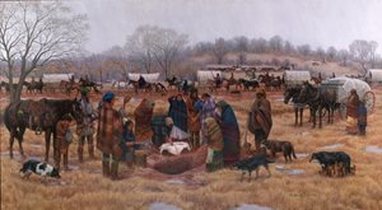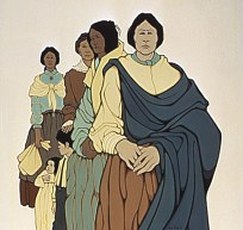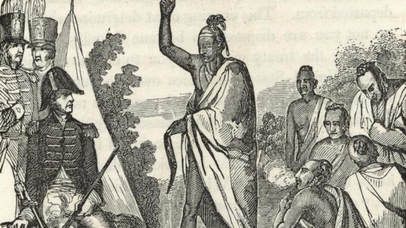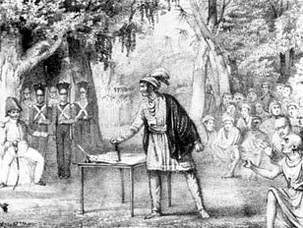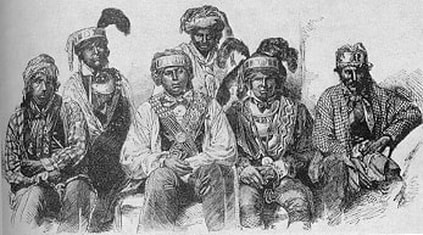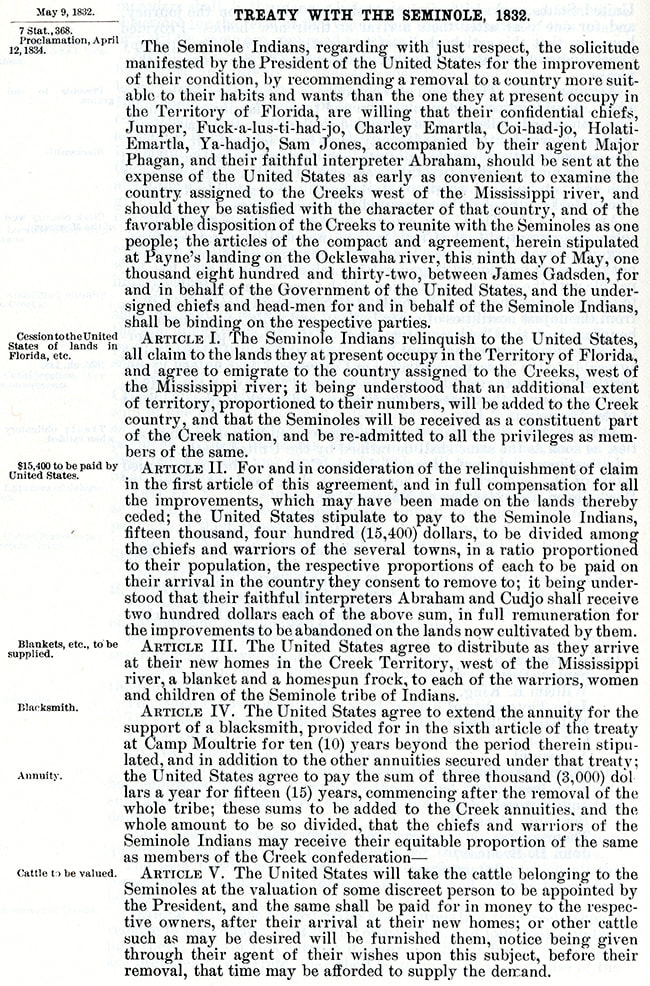Treaties and Resistance
Native Americans objected removal and conflict arose when tribes resisted. They believed the government’s treatment was a form of tyranny. The government refused to compromise and wanted removal treaties signed by any means necessary. Following the passage of the Indian Removal Act, the U.S. government entered into treaties with the five southeastern tribes. Each were promised that cultural practices would continue without settler interference.
"It will be my sincere and constant desire to observe toward the Indian tribes within our limits a just and liberal policy, and to give that humane and considerate attention to their rights and their wants which is consistent with the habits of our Government and the feelings of our people."
- President Andrew Jackson
- President Andrew Jackson
|
"…the laws of these states are written in more than a hundred big books we cannot read, we cannot understand them and altho we love our white brethren, we cannot see in the extention [sic] of state laws anything but injustice and suppression...”- Chickasaw Leaders
|
Chickasaw:
The Treaty of Pontotoc was signed in 1832. This treaty stated the federal government would administer the Chickasaw with western land and would defend them until they were removed. |
|
Choctaw:
The Treaty of Dancing Rabbit Creek was signed in September 1830. They were the first tribe removed. Approximately 5,000 natives stayed in Mississippi and eventually were involved in conflict with white settlers. "Yet it is said that our present movements are our own voluntary acts — such is not the case. We found ourselves like a benighted stranger, following false guides, until he was surrounded on every side, with fire and water. The fire was certain destruction, and a feeble hope was left him of escaping by water. A distant view of the opposite shore encourages the hope; to remain would be inevitable annihilation."-George W. Harkins Choctaw chief
|
"And we protest against the assumption of jurisdiction over us, on the part of the state of Mississippi, or of any other State, as contrary to the faith of treaties, and utterly subversive of our rights as a free people."- David Folsom, Choctaw chief
"We have no expectation that if we should remove to the west of the Mississippi, any treaties would be made with us, that could secure greater benefit to us and our children, than those which are already made. The red people are of the opinion, that, in a few years the Americans will also wish to possess the land west of the Mississippi. Should we remove, we should again soon be removed by white men. We have no wish to sell our country and remove to one that is not fertile and good, wherever it is situated."-David Folsom, Choctaw chief
|
"Brothers! I have listened to a great many talks from our great father. But they always began and ended with this- 'Get a little further; you are too near me.' "- Speckled Snake (Creek)
"I love my home, and will not go from it...I say, we must not leave our homes and lands."
-Osceola, Seminole chief
-Osceola, Seminole chief
|
Seminole:
The Seminole refused to leave their ancestral homelands. A small group was coerced into signing a removal treaty in 1833. Most tribe members refused to relocate, leading to the Second Seminole War from 1835-1842. Eventually, most Seminole moved to the new territory. |
